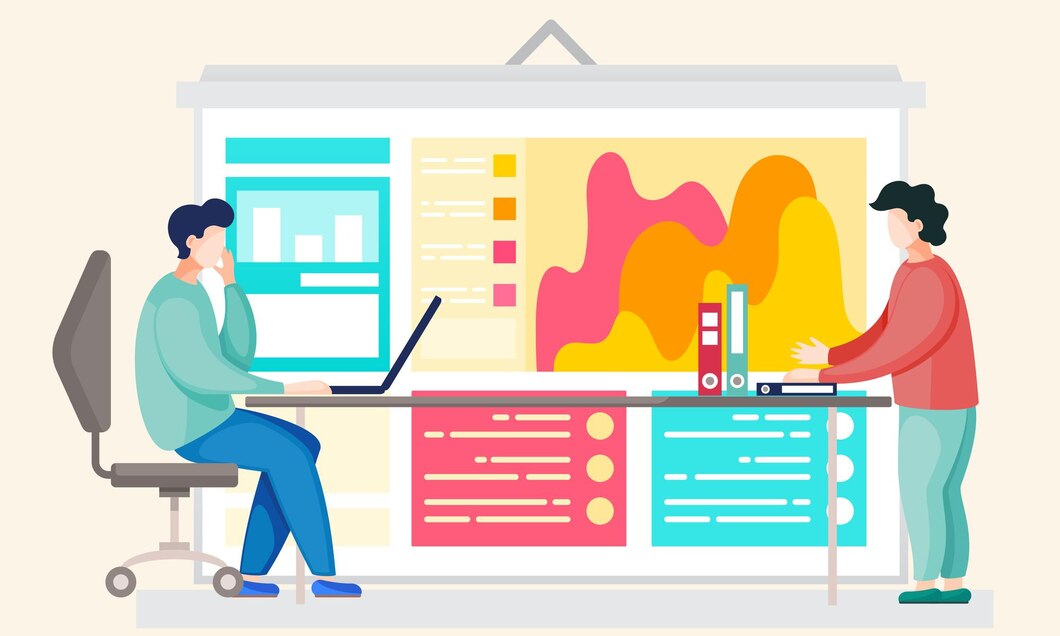Introduction
In the modern landscape of design, the fusion of data and creativity has become a powerful tool for graphic design agencies. While creativity has always been the cornerstone of graphic design, the integration of data-driven insights allows agencies to refine their artistic vision with precision. This combination ensures that design choices are not only aesthetically pleasing but also strategically aligned with business objectives and audience preferences. By leveraging data, graphic design agencies can make informed decisions that enhance the impact and effectiveness of their work.
Understanding Audience Behavior
One of the primary ways graphic design agencies utilize data is by analyzing audience behavior. Through various analytical tools, agencies can gather insights into how users interact with different design elements. This includes tracking metrics such as click-through rates, time spent on pages, and user engagement levels. By understanding these patterns, designers can identify what resonates with the audience and what doesn’t. This data-driven approach allows agencies to create designs that are more likely to capture attention and drive desired actions, whether it’s increasing website traffic or boosting sales.
Personalizing Design Strategies
Data enables graphic design agencies to tailor their strategies to specific audience segments. By analyzing demographic information, purchase history, and user preferences, agencies can create highly personalized design solutions. For instance, a graphic design agency might use data to determine the color schemes, fonts, and imagery that appeal most to a particular target group. This level of personalization ensures that the design speaks directly to the audience’s needs and preferences, enhancing the overall user experience and building stronger connections with the brand.
Enhancing User Experience (UX) Design
User experience is a critical aspect of modern graphic design, and data plays a crucial role in optimizing UX. Graphic design agencies use data to identify pain points and areas of improvement within a digital interface. Heatmaps, A/B testing, and user feedback are some of the tools used to gather UX data. By analyzing this information, designers can make evidence-based adjustments to navigation, layout, and interactive elements, ensuring a smoother and more intuitive user journey. This iterative process of testing and refining based on data helps create designs that are not only beautiful but also functional and user-friendly.
Predicting Design Trends
Staying ahead of design trends is essential for graphic design agencies looking to maintain a competitive edge. Data analysis helps agencies predict upcoming trends by monitoring industry patterns, consumer behavior, and social media activity. For example, tracking the rise in popularity of certain design styles or themes across various platforms can provide valuable foresight. Agencies can then proactively incorporate these trends into their projects, ensuring that their designs are contemporary and relevant. This proactive approach not only keeps clients satisfied but also positions the agency as a forward-thinking leader in the industry.
Measuring Design Effectiveness
Finally, data allows graphic design agencies to measure the effectiveness of their designs. Post-launch analytics provide insights into how well a design performs in achieving its goals. Metrics such as conversion rates, brand recall, and customer feedback are crucial indicators of success. By evaluating these outcomes, agencies can assess the return on investment (ROI) of their design choices and make necessary adjustments for future projects. This continuous feedback loop ensures that designs are not only creative and engaging but also effective in delivering tangible results.
In conclusion, the use of data in graphic design agencies represents a significant advancement in the field. By understanding audience behavior, personalizing strategies, enhancing user experience, predicting trends, and measuring effectiveness, agencies can drive creative decisions that are both innovative and impactful. This data-driven approach not only elevates the quality of the design but also aligns it with broader business objectives, ensuring that every creative endeavor is grounded in real-world insights and poised for success.






Comments